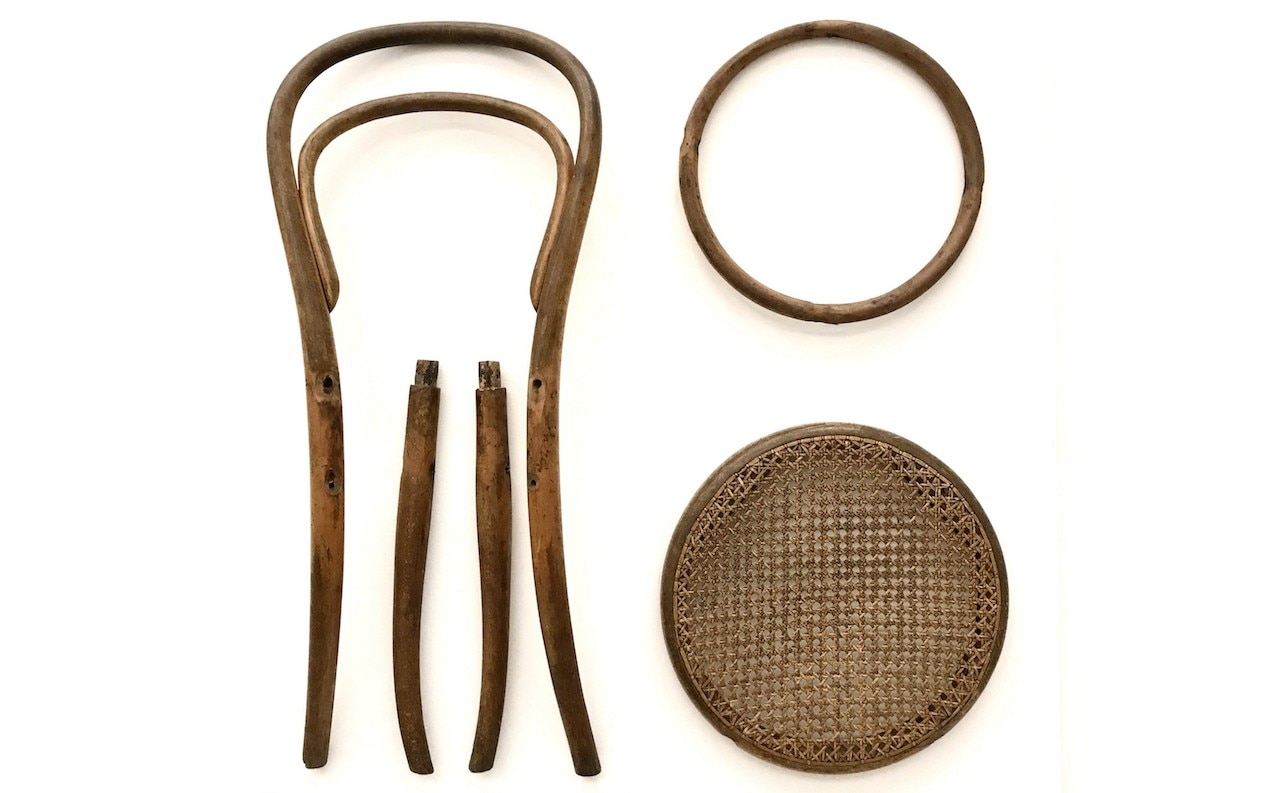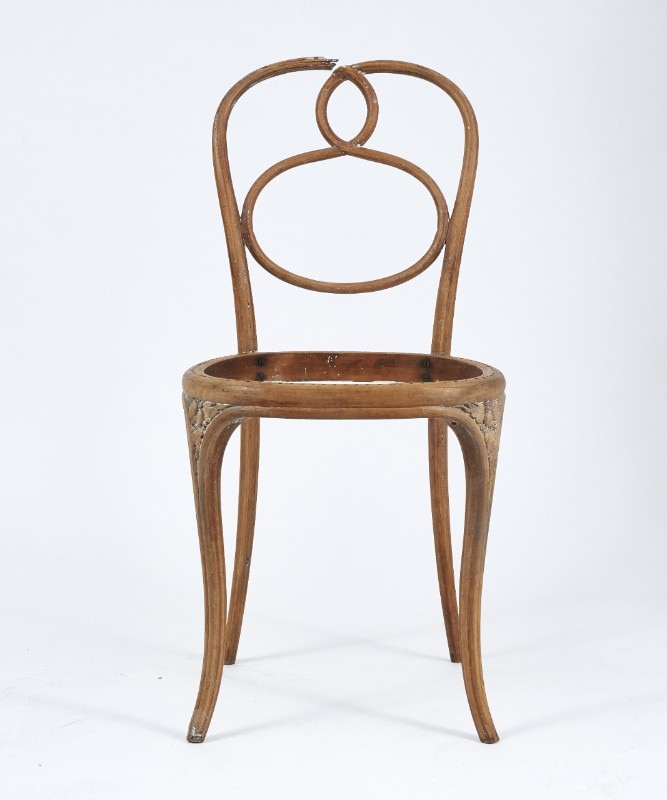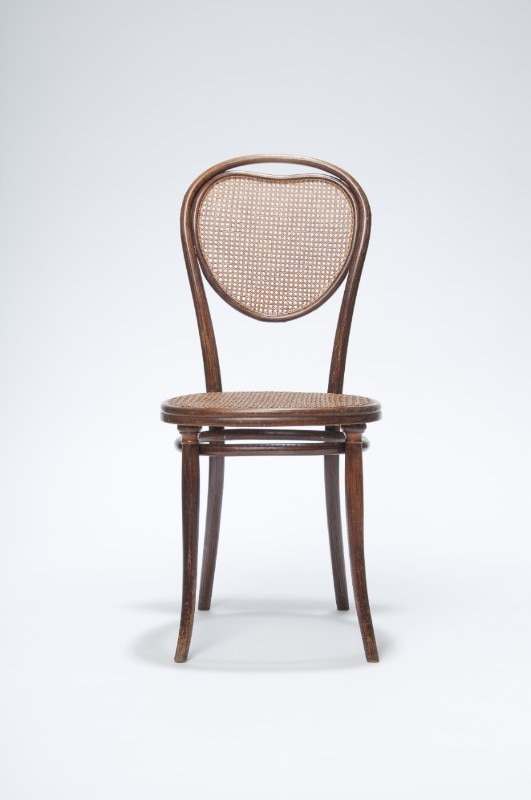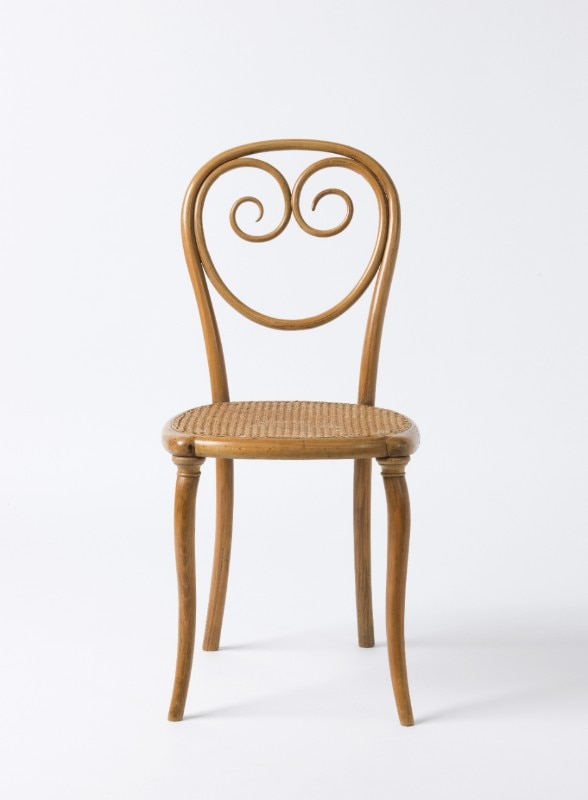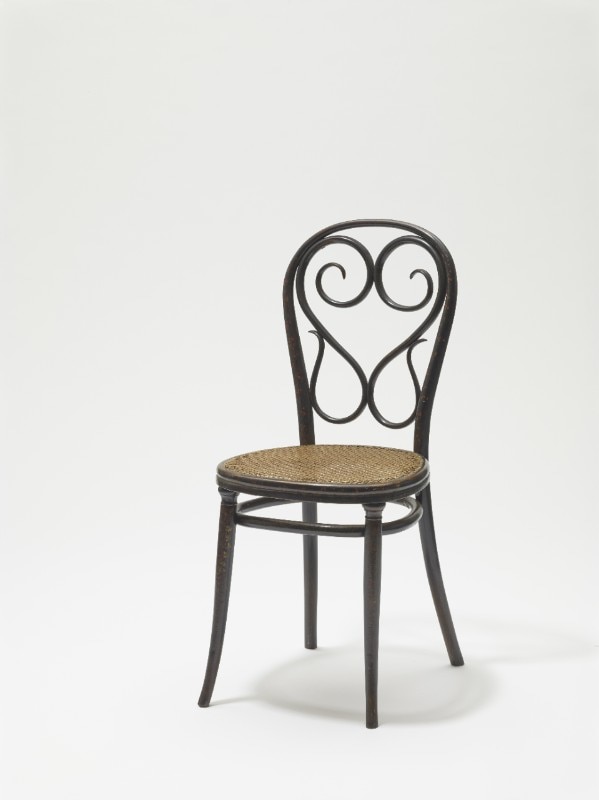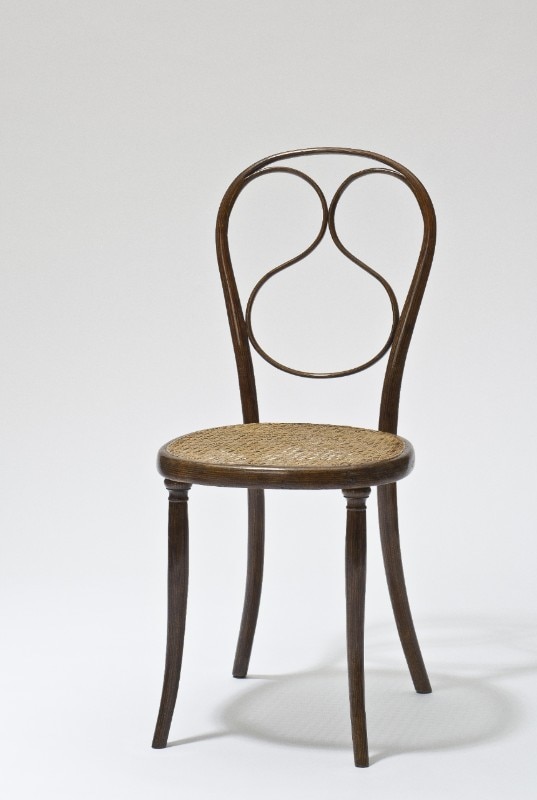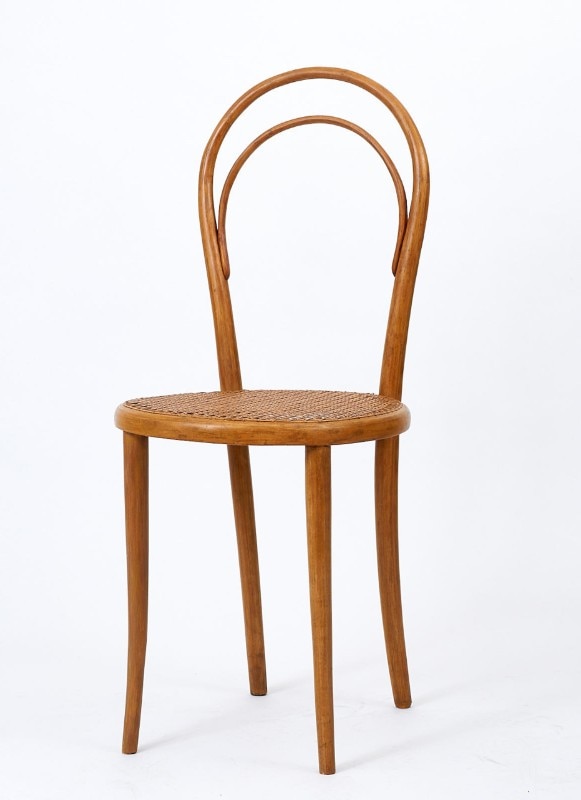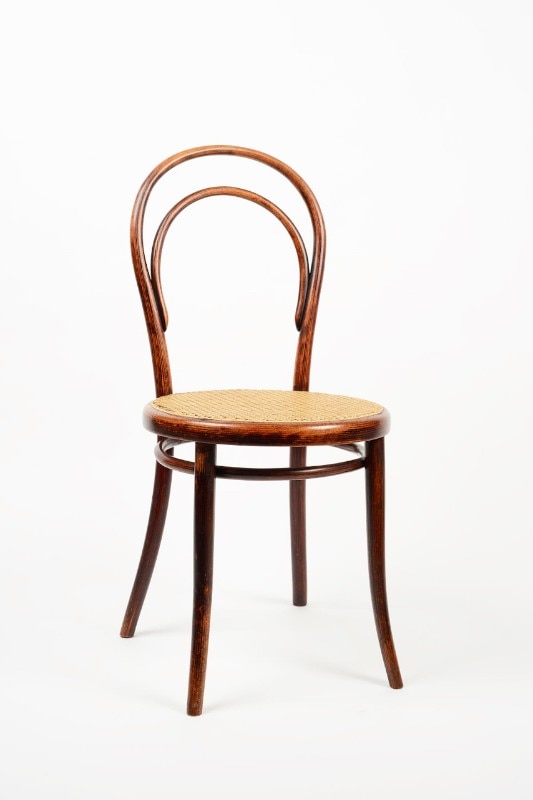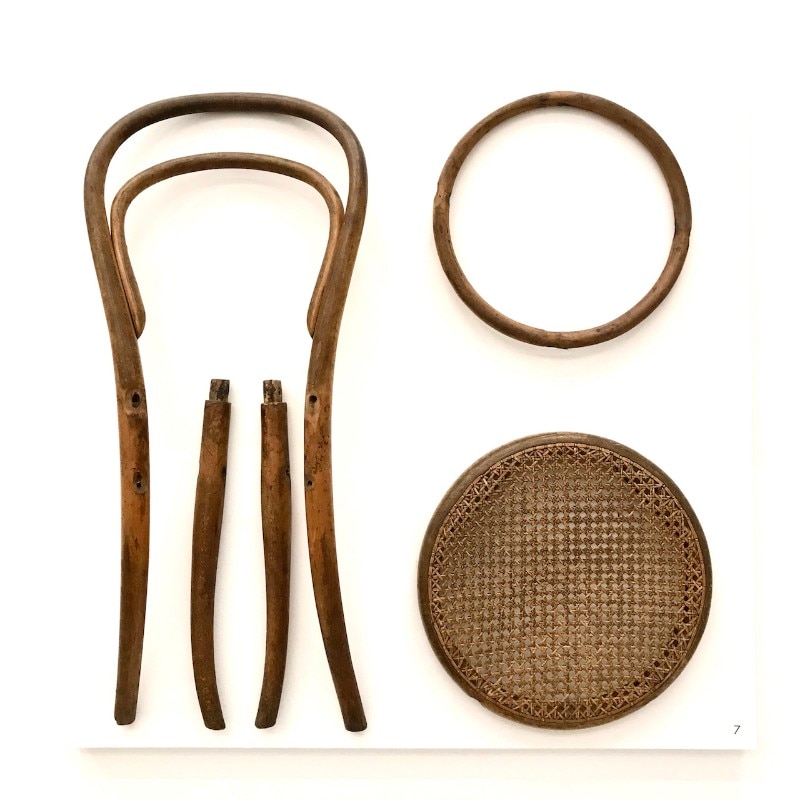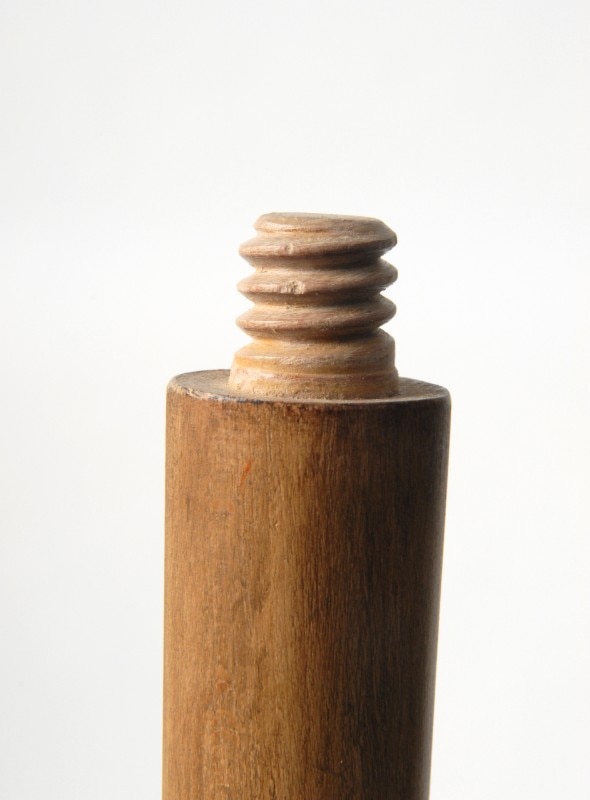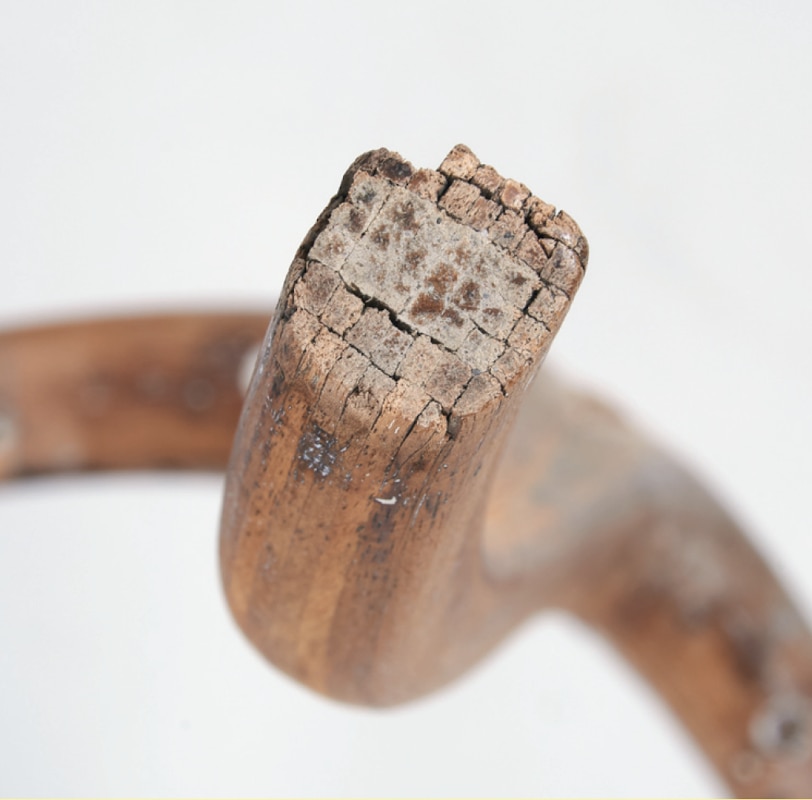This article was originally published on Domus 1043, February 2020
The Thonet No.14 is not only the first mass-produced chair but also, after 160 years of continual production, the most successful in terms of volume sold and longevity of design. It represents the best example of a design which has been refined to the point where there is no way to improve it.
Every component plays its part in maximising performance while minimising material and manufacturing effort. Though the numbers have significantly reduced (due to cost and competition) and despite a change of the seat shape by the company in the 1970s, a new No. 14 in the right finish can still compete. In its simplicity and undecorated wholeness, it remains the benchmark for chair design. While it has rightly come to be considered a modern archetype, and in my opinion it is still a reference with which we subconsciously assess the quality of a new chair design, the precise history of its development has not always been clear. Recent investigations have brought new details to light.
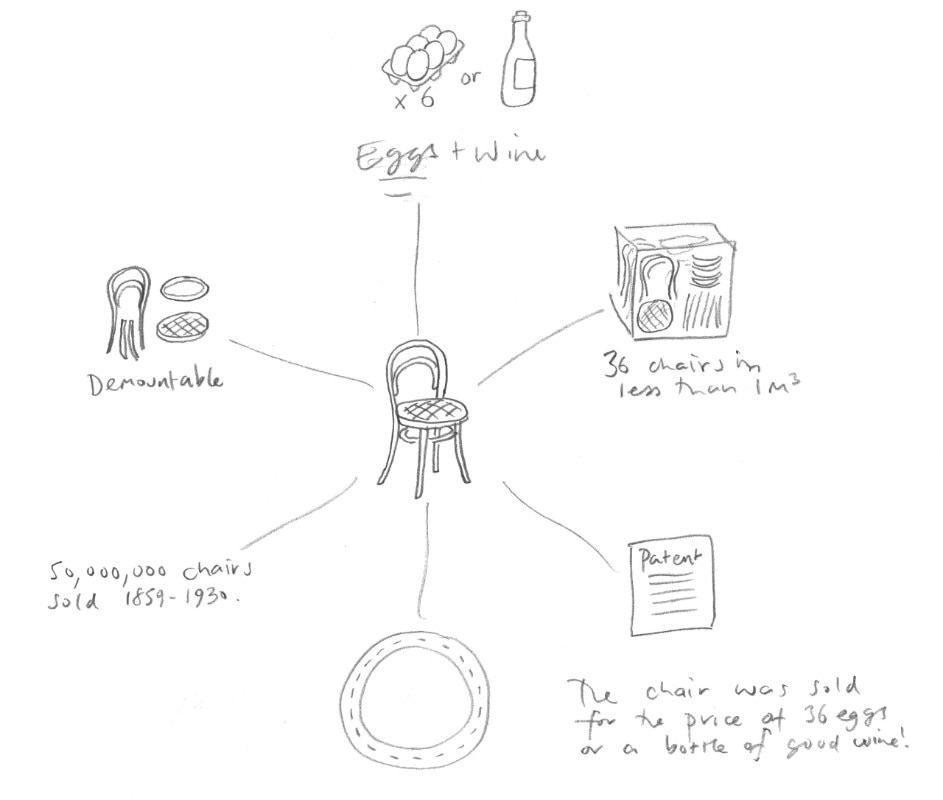
In the early days of its manufacturing the chair cost three Austrian schillings, an amount which at the time could buy you three dozen eggs or a reasonable bottle of table wine. Workers at the Thonet factory received between 2 and 12 schillings a week, and they could produce, with the help of a boy, 30 to 35 chairs a day. It was a high-performance chair that most people could afford. At its height, the No. 14 chair was averaging sales of 230,000 pieces a year across the world, a remarkable achievement made possible by the appeal of the chair itself and by the development of rail and sea transport brought about by advances in steam-power efficiency.
The design of the chair was not a flash of inspiration, but rather the result of 30 years of experimentation and the development of several other models that contributed to the eventual perfecting of the No. 14. Throughout this period, Michael Thonet combined the roles of designer, engineer, inventor, manufacturer, logistics expert and entrepreneur. His earliest experiments were made with flat strips of veneer glued together to create bent elements in a more or less single plain. From this he progressed to gluing bundles of thin square sections of wood and forming them into three-dimensional curved elements.
But his ultimate goal was to bend solid wood by steaming to reduce the time and labour involved in laminating or bundling. Thonet was not the first to make chairs with steam-bent solid wood. A century earlier, English Windsor Chairs had used bent wood for their backrests and arms. However, there was very little precision involved compared with Thonet’s techniques, and in 1842 he was granted a patent for the process that he had developed.
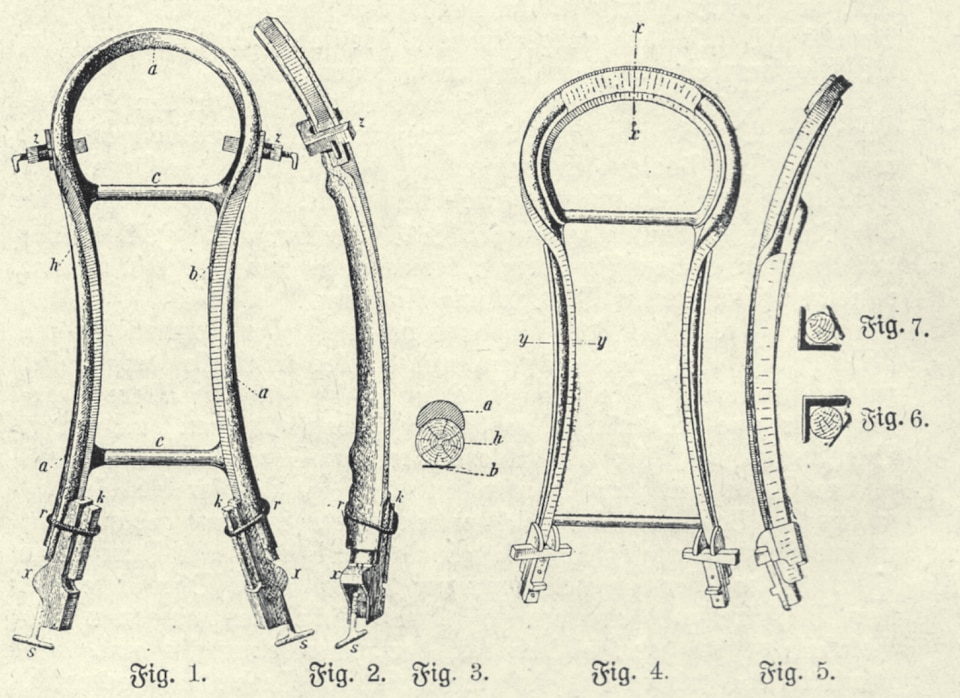
There followed a stream of models which all contributed to the development of the No. 14. The first was the model he was commissioned to make for the Liechtenstein Palace in Vienna, achieved with the radical technical innovation of bundling, gluing and forming small, square sections of wood together into the curved components of the chair. Due to the enhanced strength this technique achieved, he was able to work with far thinner sections than those of a traditional “carved” wooden chair.
There is speculation that the chair’s design may have involved the architect of the palace Peter Hubert Desvignes. If that were the case, he may also have been involved in the design of some of the bent-wood models that Thonet developed next, specifically the No. 1 and No. 3. Both of these designs share certain characteristics with the Liechtenstein chair and clearly form part of the development of the No. 14. On a purely formal level, the Liechtenstein design already contained the code that Thonet used for the No. 14, although with much less of the conceptual rigour. That was to come from the inventive mind of Thonet himself, searching for a way to make the chair practical and affordable.
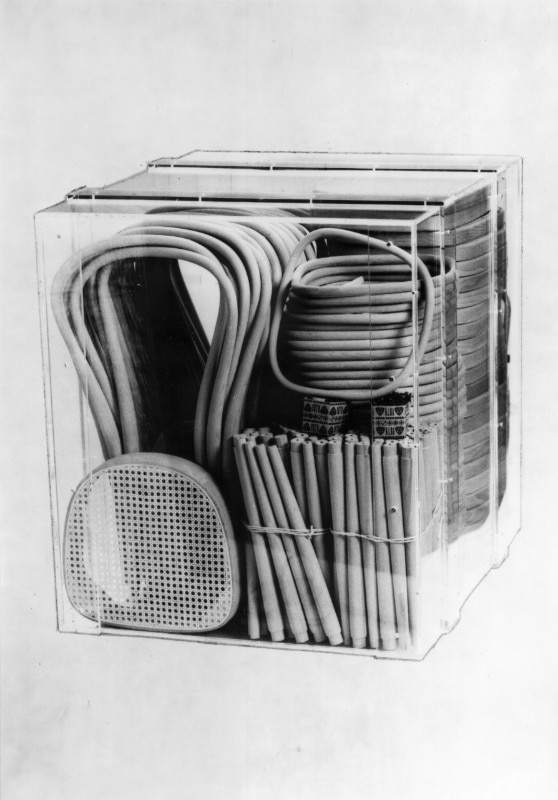
The Liechtenstein is an exceptionally elegant chair with a timeless quality brought by its simple logic and lack of superfluous detail. One can understand that both Desvignes (who was also a patron of Thonet) and Thonet himself would have wanted to profit from the results of their efforts on the Liechtenstein chair. There was the added motivation that the commissioned chairs were complicated and expensive to make, and even if the royal commission allowed them to sell them elsewhere, they would have found few customers rich enough to buy them. The first attempt, in 1845, was the No. 3 chair which deconstructs the Liechtenstein model, separating the rear leg and backrest and combining them in one length of laminated wood.
The front legs are also detached, fixed to the seat frame in a direct way with a vertical dowel and stabilised by the addition of a capital at the top of the leg, which widens the contact area while allowing the leg to remain thin. The shape of the front leg keeps the waviness of the Liechtenstein but with a rounder section. There is also an inserted backrest element within the back leg frame which could be caned or upholstered. All the changes represent simplifications for the benefit of making a cheaper chair while keeping as much of the elegance as possible.
Whoever deserves credit for design of the Liechtenstein chair, the No. 3 and the No. 1, Thonet’s encounter with Desvignes appears to have been a crucial factor in the evolution of the No. 14
Thonet’s numbering system relates to the way the models were later shown in the catalogues rather than their chronological order. Thus the No. 3 was followed in 1846 by the No. 2, which swapped the full loop of the inserted backrest for a more elaborate curlicue design, left alone to provide support without cane or upholstery. Then came the No. 4 in 1849, with an even more elaborately curled backrest insert, representing a step backwards in the simplification process, perhaps out of fear that they might be alienating their richer customers’ taste for more fancy woodwork, but certainly to achieve a lower cost model. The No. 1 followed with a radically simplified backrest insert which echoed the Liechtenstein chair.
The design of this model, along with the No. 3, is occasionally credited to Desvignes, and if it is true that he was involved in the design of the Liechtenstein chair then one can see why. Most likely the designs of all three models involved input from both of them. Desvignes would not have had the technical awareness that a chair with a structure as light as the Liechtenstein one would have been possible, while Thonet’s earlier designs showed none of the fluid elegance that this model exhibits. Whoever deserves credit for design of the Liechtenstein chair, the No. 3 and the No. 1, Thonet’s encounter with Desvignes appears to have been a crucial factor in the evolution of the No. 14.
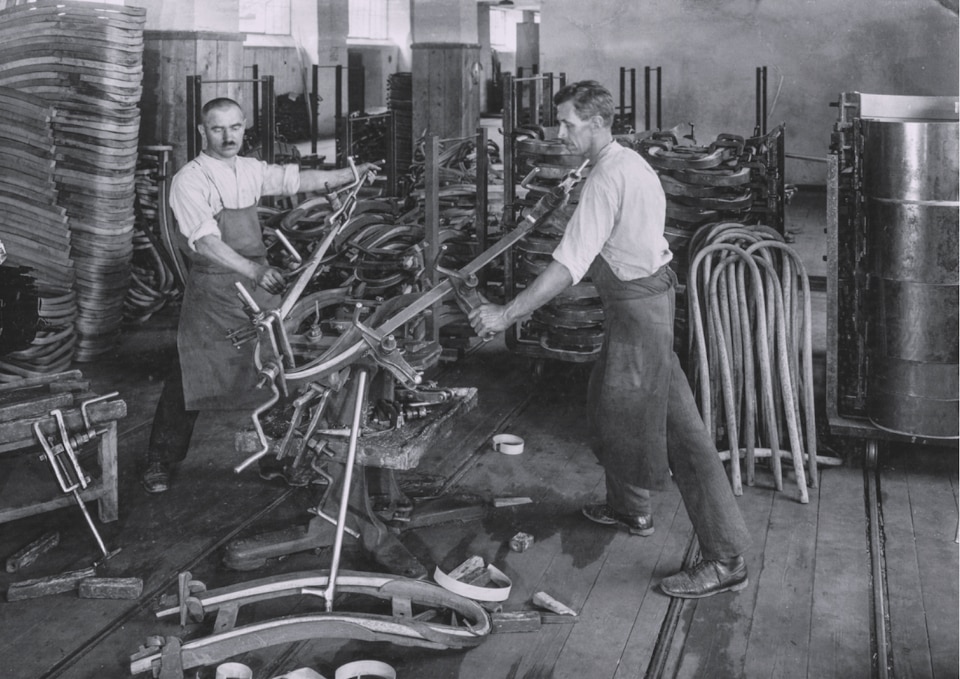
Throughout the development of these chairs, Thonet continued experimenting with bending solid wood elements for each of the chairs’ components. In 1856 he received a patent from the Austrian state for the production of furniture from wood bent with the aid of steam. Two models appear just before this official recognition, the No. 8 and a proto-No. 14 made for the Hanoverian royal family, which was only recently discovered at an auction of property from the Royal Collection. Since the No. 14 is considered an evolution of the No. 8 (usually dated 1855), this proto-No. 14 (dated 1856) can be considered the missing link between the two.
The differences are interesting. The No. 8 is the more refined and decorative of the two, with the U-shaped backrest support given the appearance of a spliced and grafted branch, as if it were growing out of the main backrest splat. The tops of the front legs have capitals to strengthen what appears to be a rather fragile connection, and the seat is a rounded trapeze shape. The Hanover chair, on the other hand, is closer to the eventual No. 14 – almost unrealistically delicate in poise and proportion. The seat is round (cheaper to make) and the top of the leg is screwed straight into the bottom of the seat ring with a wooden thread turned from the upper part of the leg. The U-shaped backrest support is butted rather than grafted (significantly cheaper).
The obvious question is why the Royal House of Hannover would choose or be proposed a chair which was less refined in terms of construction than another recent design. The only answer I can think of which explains this peculiarity is that the Hanover Chair, in its startling elimination of all unnecessary detail, represented nothing less than a tangible sense of the future, and must have offered something as yet unseen and unexperienced, a sense of modernity to come. Its newness must have been irresistible. For Thonet it must have represented, except for a few structural and ergonomic details, pretty much what he wanted to achieve: a modern, lightweight, affordable, practical chair which could be produced in large numbers and make Thonet the undisputed champion of chair manufacturing.
His aesthetic-minded self must have struggled with his practical, commercial-minded self, and reluctantly given way to the reinforcing ring below the seat, the more generous, less elegant proportions, and the splayed back legs for greater stability. But the design was strong enough to take these annoyances, especially if they were the way to achieve the spectacular success that the No. 14 would prove to be. For an idea of the scale of that success, one has only to look around for other chairs still in production since 1859.
Who was Michael Thonet
Michael Thonet was born in 1796, the same year that the first factory opened to produce James Watt’s steam engine. The tantalising prospect of cheap machine-made goods must have been in the air as he grew up and apprenticed as a carpenter.
In 1819 he opened his own woodworking business. Naturally inventive, he made his first experiments in wood bending in 1830, for which he was granted a patent in Paris in 1841. The process which led to the mass-produced model No. 14 combined formal, functional, material, technical and manufacturing innovation running over two decades, while driving towards a low-cost chair that could be distributed in large numbers, making it the longest and cleverest chair design ever concluded. How shallow it makes today’s typical design seem.


